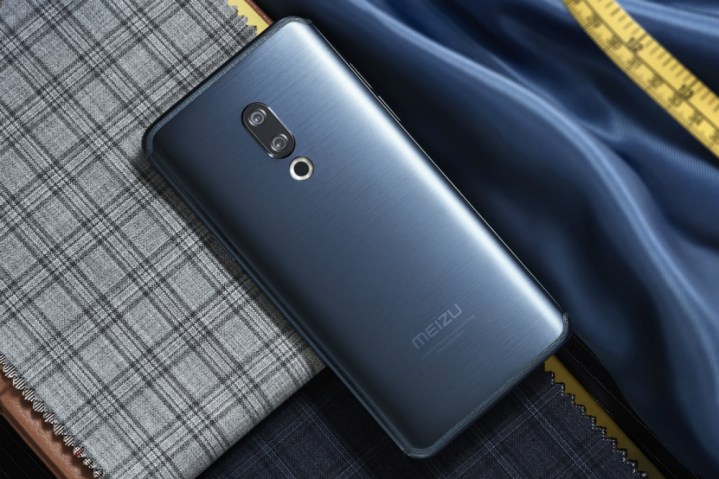
Chinese smartphone manufacturer Meizu is celebrating its 15th anniversary this year and has released three new smartphones, named Meizu 15, to commemorate the occasion. The Meizu 15, Meizu 15 Plus, and Meizu 15 Lite were revealed at an event in Wuzhen, China on April 22. The three devices differ from most new phones we’re seeing for two major reasons, both related to screen technology and design.
Meizu 15

The Meizu 15 sits in the middle of the three new phones, with its 5.46-inch Super AMOLED screen, 1920 x 1080 pixel resolution, and Qualcomm Snapdragon 660 processor. What’s surprising here is that Meizu has not adopted the current 18:9 aspect ratio screen format, or opted to include a notch at the top. This gives the Meizu 15 a traditional smartphone look, instead of the ultra-modern styles currently taken on by Samsung, Huawei, Vivo, LG, and others.
A screen-to-body ratio of 83.4 percent has been achieved by shrinking the side bezels down, and the chin remains complete with a circular fingerprint sensor. On the back of the phone is a dual-lens, centrally and vertically mounted camera setup. The Sony-produced sensors have 20 megapixels and 12 megapixels, with a 3x lossless zoom, a 1.55nm pixel size, optical image stabilization, an f/1.8 aperture, and a six-LED dual-tone flash ring. The selfie camera has 20 megapixels and an f/2.0 aperture.
The metal body contains dual stereo speakers, weighs 152 grams, and is 7.25mm thick. Alongside the Snapdragon processor is 4GB of RAM and either 64GB or 128GB of memory, plus a 3,000mAh battery with Meizu’s mCharge technology. This takes the cell to 54 percent capacity in 30 minutes. The Meizu 15 range runs Android with the company’s new Flyme 7 user interface over the top; but it’s not clear which version of Android Flyme 7 is built on at the moment.
Flyme 7 incorporates a new look, new haptic feedback features — including in the fingerprint sensor, which doubles as a multi-function Home button — and an upgraded artificial intelligence engine called One Mind. One Mind’s actual functions aren’t very clearly explained yet. Meizu says it’s better at “understanding needs,” and helps make Flyme 7 more user friendly and enjoyable. It enhances the selfie camera by recognizing age, gender, and other user characteristics, helping to take a better photo.
Meizu 15 Plus

The Meizu 15 Plus is the flagship of the range, with a larger 5.95-inch Super AMOLED screen, a 2,560 x 1,440 pixel resolution, and a Samsung-supplied Exynos 8895 processor with 6GB of RAM providing the power. This is the same chip used in some versions of the Samsung Galaxy S8. The battery size increases to 3,500mAh, while the camera, storage, software, and other specifications are identical to the Meizu 15.
Meizu 15 Lite

Finally, the Meizu 15 Lite has the same 5.46-inch screen size and 1080p resolution as the Meizu 15, but loses the Super AMOLED panel, and drops the dual-lens camera. Instead it has a single 12-megapixel camera with an f/1.9 aperture. The processor is a Snapdragon 626 with 4GB of RAM, and 64GB of storage space, driven by a 3,000mAh battery.
Price and release
The Meizu 15 phones have all been announced for China and will be on sale from April 29. The company sells devices in various other countries, but not officially in the United States or the United Kingdom. However, if you’re keen on a phone that shuns tall screens and notches, then all will inevitably be available through an importer following release. The approximate price for the Meizu 15 is $400 for 64GB or $445 for the 128GB, $475 for the 64GB Meizu 15 Plus or $525 for the 128GB model. The Meizu 15 Lite will be yours for around $270.


